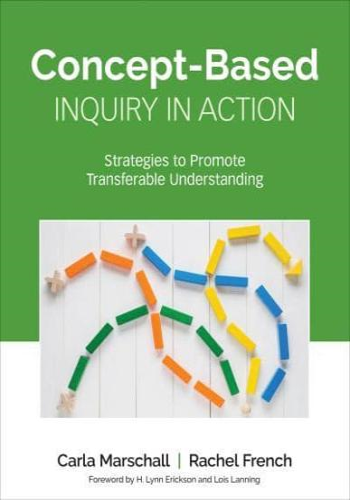"This is exactly what my school needs right now to support colleagues to build on the foundations of our written concept-based curriculum and to take-off our taught curriculum to the next - and highest - levels."
Neville Kirton, Deputy Head of Secondary
Colegio Anglo Colombiano, Bogota, Colombia
"Filled with strategies, illustrations, diagrams, and pictures, this book really gives you the insight you need to help students better understand what they are learning. So many great ideas that can be used in any classroom. A must read for all educators."
Amanda McKee, 9th, Algebra/Geometry, Secondary Certified Instructor/Mentor
Johnsonville High School, Johnsonville, SC
Create a thinking classroom that helps students move from the factual to the conceptual
All students deserve the opportunity to think conceptually. But seeing conceptual relationships does not come naturally to every student. How can teachers construct thinking classrooms where students can move from the factual to the conceptual level of thinking?
Concept-Based Inquiry in Action has the answers. In this book, the authors marry theory with practice to create a new framework for inquiry that promotes deep understanding: Concept-Based Inquiry. The key is helping students to inquire into concepts and the relationships between them using guiding questions developed by the teacher, the students themselves, or by the teacher and students together. Step by step, the authors lead both new and experienced educators to implement teaching strategies that support the realization of inquiry-based learning for understanding in any K-12 classroom.
The book and its accompanying website are rich with the resources necessary to facilitate the construction and transfer of conceptual understanding, including
- Numerous practical teaching strategies, aligned to each phase of Concept-Based Inquiry, that can be modified for diverse populations
- Visual notes that represent significant ideas discussed within each chapter
- Videos of instructional strategies and teacher interviews that show Concept-Based Inquiry in action in K-12 classrooms around the world
- Templates of graphic organizers, sample anchor charts, and blackline masters that support the use of teaching strategies in the classroom
- Planners that show how the phases of Concept-Based Inquiry come together in a unit
In a world filled with complexity, the role of the teacher as a facilitator of conceptual understanding has never been more pressing. Concept-Based Inquiry in Action provides teachers with the tools necessary to organize and focus student learning around concepts and conceptual relationships that support deep understanding.







